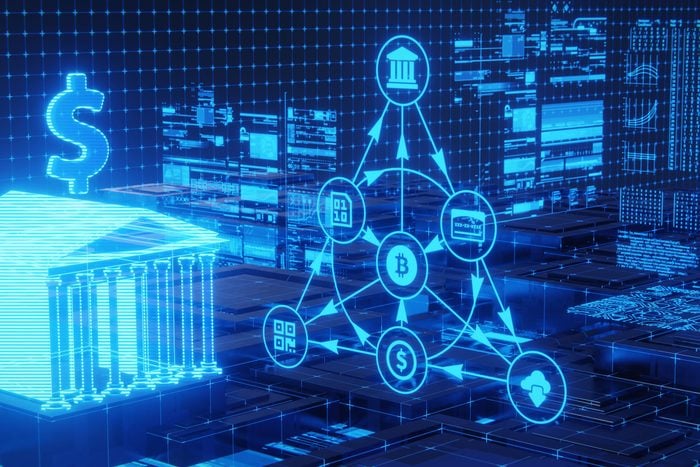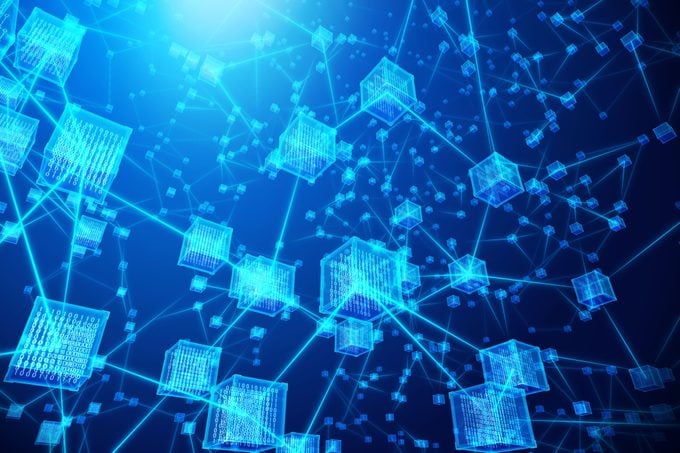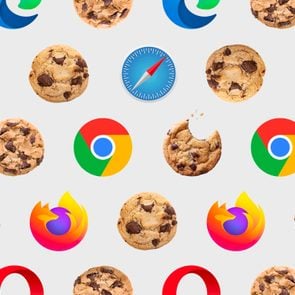Web3 Is the Future of the Internet—Here’s Why You Need to Know About It
Updated: Jun. 05, 2023

Web3 is the newest version of the internet. Here's what that means, what to expect and when it's coming.
The Reader’s Digest Version:
|
What is Web3? Web3 is the newest version of the internet. That sounds huge, and it is, but the internet isn’t being uninstalled and replaced with a new version. Rather, it’s about adding to what we already use. And don’t worry if you’re confused about AR vs. VR, you love VR or you hate them both—there will be something for everyone. Web3 will eventually shape what the metaverse is and how we shop (AI may pick out the best VR headsets for us, for example) and will keep our data more secure.
How the internet has changed
So far, there have been two versions of the internet. The first version was called Web 1.0, or read-only web, which lasted from the beginning of the internet in 1989 to the early 2000s. Its intent was to share information; there wasn’t any interaction between the visitor and what was online. You could put up your own pages online, or you could read other people’s pages. That’s it. Other than email, communication was nil. All the information was stored on a server and accessed only by a computer.
Slowly, the internet evolved into Web 2.0, or read-write web. It became official around 2004, and it is what we use today. This version allows people to interact with what they see online through comment sections, social media and more. Instead of being stored only on personal servers and accessed by computers, 2.0 information can also be stored in cloud storage (hosted servers) and viewed on tablets, mobile phones and even your fridge, in addition to your computer.
What is Web3?
So when you ask, what is Web3 (Web 3.0), the answer is really that it’s just the next evolution of the internet, growing out of Web 2.0. We’re already getting glimpses of what it will eventually be, even if there is no hard definition of what this progression will entail.
Like the earlier versions of the internet, Web3 is building off the past generations and adding to it. It is considered the read-write-own or read-write-execute version of the internet. Decentralization, privacy, machine learning and safety are some trends we are already seeing that will shape the Web 3.0 environment.
Fairness through decentralization
The big focus of Web3’s meaning is decentralization—making online communities owned by everyone, with transparent information sharing.
Instead of storing information through database giants such as Google, information will be freely shared and stored in many locations (this is called distributed computing). Everything will be shared by DAOs (Decentralized Autonomous Organizations). DAOs are groups built for one purpose, community run, relying on each member within the DAO to work in the best interest of reaching a common goal.
“DAOs really emerged among cryptocurrency enthusiasts and are largely used to make decisions in a bottom-up, ideally equitable management approach,” explains Sharad Varshney, CEO of OvalEdge, a data governance consultancy.
Privacy through blockchain
Blockchain is considered a pivotal part of decentralization. Ownership of things on the internet will be registered on the blockchain, which is a transparent and publicly accessible data system that allows anybody to see what goes on in it, says Billy Huang, co-founder of Luna Market.
An example of people using blockchain includes registering digital assets (NFTs) and tokens (crypto), which allow people to transfer digital goods seamlessly without needing to know the other party. Personal identity isn’t revealed unless users decide to share their real identity by tying their blockchain wallets (think of this as your Web 3.0 ID) to their personal information.
There is one main difference between blockchain technology and past infrastructures: databases. “Databases in the past were controlled by a single person or organization, and they had complete control over that system,” says Huang. “They could control how the data is stored and changed, leading to errors and fraud. Blockchains, on the other hand, allow anyone to create systems that can be audited by anybody. Because it is open to everyone, it allows anyone to understand the systems they are interfacing and develop trust with users who use their apps.”
Security through encryption
Encryption is another part of Web3. It basically ensures that no one can access data except for the intended parties. While we already use encryption to protect our online data, as the internet evolves we’ll use it to ensure data can be both publicly transparent and privately owned.
For example, encryption will keep your information private as you transfer ownerships and assets on the blockchain, said Huang.

Machine learning through AI
Another piece of the Web 3.0 puzzle was dreamed of way back in the 1990s. The idea was computers would be able to contextualize information much like the human brain. Beyond just knowing what the information is, the AI (artificial intelligence) would understand the meaning and emotion behind the information, serving it up to humans in a more intelligent way than search engines do today.
AI could, for example, find you the pair of shoes at the best price point for you using your personal preferences and style, just like a human personal shopper. It may also be able to shop for a car or vacation for you and then provide you with highly customized options.
AI could also be used to make things of value using this advanced way of learning, such as creating new medicines or manufacturing new products.
“There are already a few use cases of artificial intelligence in Web 3.0 applications,” said Huang. “For example, there is AI-generated art, which is then sold as NFTs.”
How might this all fit into the metaverse someday?
“Although it’s hard to pinpoint, I expect the metaverse will use blockchains to keep track of digital asset storage,” says Huang. One potential use is that creators in the metaverse may be able to register their digital assets, like sound, music, immersive experiences and games, in a safe and transparent way.
Web 3.0 AI may also be able to build you custom metaverse games or environments based on your personality and preferences.
Examples of Web3 companies, platforms and networks
There are already many Web3 examples created and thriving. Popular Web3 networks include Ethereum, Solana, Polygon and Cosmos. Some popular Web3 platforms include OpenSea, Coinbase, Ledger and MetaMask. Many of these networks and platforms sell NFTs or cryptocurrencies like Bitcoin.
Cons of Web3
Are there downsides to Web 3.0? It’s really too soon to tell. We are still in the infancy of this new version of the internet. There are theories, though.
Some believe that DAOs, in particular, could be chaotic. Without someone or something in control, hate speech and misinformation, for example, could get worse because there won’t be anyone to police it. Policies may help sort things out, eventually.
“Even though DAOs reject the constraints of centralized control, they still need to adopt governance policies, including data governance,” says Varshney. “As DAO organizations operate entirely online, governing data effectively is critical for security, access, collaboration and more. DAOs are built on and work using digital information. Ensuring that this data is well managed using a dedicated tool should be at the top of the list when deciding on governance protocols.”
How Web3 could affect your life
In the future, your data will be yours and you can use it to create a better life. Companies collecting your personal data every time you buy something or search for something online could be a thing of the past.
AI could work as your own personal butler, creating personalized experiences for you using the data you control. You may also be able to build custom games and environments using AI.
Conclusion
Though there is a lot that may come with Web3, there are some overall themes that are already emerging. The pull away from “big data” with an emphasis on giving the user more freedom and security is already happening.
While Web 3.0 may seem exciting, and a little daunting, it is important to remember that there won’t be a big change right away. Over time, the internet as we know it will slowly evolve into the new version, just like 1.0 evolved into 2.0. It will be easy for most to adapt, as earlier functionalities of the web will remain, and we may not even realize it’s happening. As for when that will be, some experts predict it will take a minimum of 5 to 10 years.
Sources:
- Sharad Varshney, CEO of OvalEdge
- Billy Huang, co-founder of Luna Market



